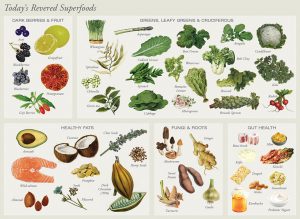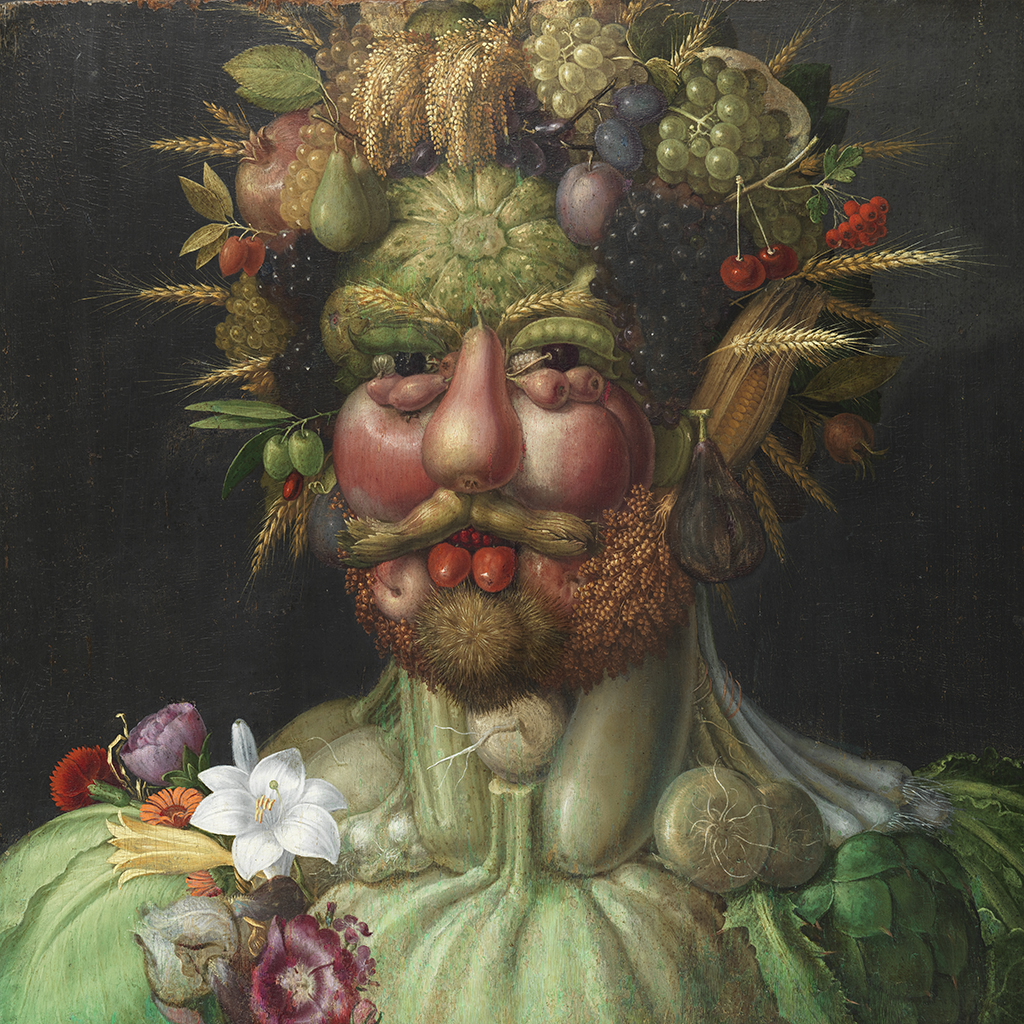Asking a nutritionist to define “superfoods” is like asking a 7-year-old to tell you about his favorite superhero character—responses are biased, influenced by media and marketing, and vary from moment to moment.
Just as superheroes continue to reinvent themselves into popular culture, “superfoods” are as trendy today as in the early 20th century when Coca-Cola (containing cocaine and sugar) was promoted for its ability to calm the nerves. Ovaltine, originally consisting of eggs, whey and sugar, was first marketed as an energy drink for athletes.
The marketing persists: popularizing foods that will make humans stronger, faster, smarter, healthier and disease-free. Do any work? Popeye might shed some light.
In the 1930s, spinach became the first food to advertise superpowers, thanks to the scrawny sailor who single-handedly elevated spinach to third most favored food by children and dramatically increased spinach sales. Fast forward to ’50s superfood cabbage soup; ’70s bran muffins; and ’80s frozen yogurt. Finally, in the 1990s, superfoods returned to single ingredient whole foods with the antioxidant blueberry—an overnight sensation that catapulted the superfood industry to a $137 billion U.S. market by 2018.
Superfoods effectively date back thousands of years in ancient cultures. Olives, pomegranates, kimchi, ginseng, maca, teff, seaweed, coconut oil—these were foods of gods, warriors and common folk alike. In antiquity, superfoods beliefs were backed by experience. Today, scientific research, technology, and a hungry marketing industry capitalizes on the Western obsession with quick-fix food fads to heal diseases of modern civilization.
Which superfoods are actually superheroes of health? Typically plant-based and nutrient-dense, superfoods stand out for inherently rich compounds that either support function (detoxification, immunity and energy, the nervous system and brain health, gut integrity and a diverse microbiome) or optimize health by offsetting risk or symptoms of disease (diabetes, heart disease, cancer).

Curcumin—the compound in turmeric —is known to reduce inflammation. Red and purple colored berries top the antioxidant charts due to anthocyanins that help reduce cellular damage. These superfoods are marketed for anti-aging, cancer protection and heart health. However, high intakes of berries and turmeric will not specifically prevent wrinkles or heart attacks, though when eaten regularly as whole foods they are beneficial and may noticeably reduce some adverse symptoms.
With more information about nutrition and disease prevention than ever before, optimal health is still a conundrum. The United States spends $30 billion annually on healthcare marketing (more than any other industrialized nation). Why, then, does the United States rank last in potentially preventable deaths and second to last on healthy living at age 60?
One trap within the superfood industry is a superficial desire for convenient health. People fixate on quick solutions to premature aging, gut dysfunction, chronic disease and overall poor life choices. How easy for entrepreneurs, then, to elevate the potential health-promoting benefits of the exotic Amazonian acai berry and green coffee beans. Ordinary foods, too—kale, broccoli—become fictitious superheroes. Validation from science boosts advertising claims. Technology and the supplement industry tightly package superfoods into convenient, highly condensed pills and powders. And people purchase.
Nonetheless, some foods truly are extra-concentrated with protective, nourishing nutrients. Brazil nuts are an ideal source of selenium; seaweed, high in iodine; garlic, rich in immune-boosting allicin; wild mushrooms, vitamin D and glutathione; green tea catechins, a potent antioxidant; cruciferous vegetables aid in detoxification. Of course they’re beneficial—they’re plants!
Some superfoods grown domestically are easy to obtain: avocadoes, blackberries, leafy greens, pumpkin, flax and hemp seeds.
Harvesting exotic superfoods may be environmentally harmful: coffee, dark chocolate, goji berries, chia seeds, maca, moringa, quinoa.
Some superfoods are symbiotic between bacteria and humans: yogurt, kefir, kimchi, kombucha kraut. Packed with nutrients fostering friendly gut flora, probiotics are to immunity what antioxidants are to aging.
What about the plain old Idaho potato? Can spuds be superfoods? Absolutely!
Potatoes grown in fertile soil untainted by chemicals, with flowers visited by bees and roots kissed by invertebrates, contain vitamins and minerals. However, “dirty dozen” potatoes—genetically modified to improve pest resistance, bruising, to increase yield and raised with chemicals in depleted soil—account for 99 percent of potato production and will not produce the same level of phytonutrients. Neither potato may match the anthocyanin-rich purple Peruvian or beta-carotene-rich sweet potato. Still, toxin-free potatoes can be nutrient dense and void of harmful substances. Therefore, the need for an acai-currant-kale-beet-juice smoothie may be, perhaps, unnecessary.
Is it villainous to suggest that growing fruit, vegetables, herbs and eggs the way nature intended might fit Merriam Webster’s “superfood” definition? Research shows that foods grown sustainably and chemical-free, harvested at peak ripeness, and transported short distances without preservatives, are superior to conventionally raised commodity foods—sometimes with a hundred-fold more nutrients.
The Standard American Diet is peppered with superfood cocktails promoting superhero effects. Perhaps the superfood era of the ’20s will tear the mask off super-fad marketing efforts and supplant poor dietary habits with nutritious, super-local whole foods.
What’s super about food?
Superfoods are touted for the nutrient-dense benefits that support optimal health, typically related to…
• Immune function
• Gut & microbiome
• Heart health
• Detoxification
• Brain health
• Chronic disease
• Nervous system
• Anti-cancer
Rather than focusing on just one or two “superfoods” from this list, make sure you eat a rotating rainbow of these superfoods on your plate—for a “super-plate” of health and nutrients.


